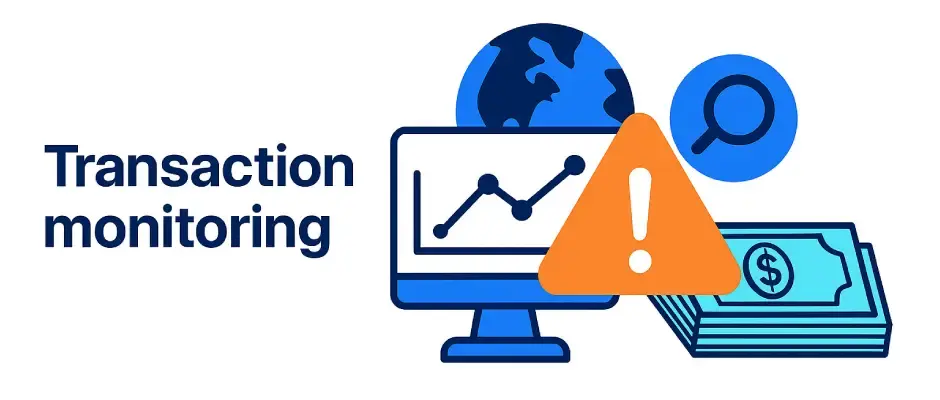How to prevent money laundering: the guide your business needs
- azakaw

- Jun 20
- 8 min read
Updated: 14 hours ago
Money laundering enables criminals to appropriate illicit funds, which often fuels further crime, corruption, or terrorism.
As the regulatory landscape tightens and expectations rise, businesses of all types must proactively take measures against financial crime. Money laundering prevention isn’t just about ticking compliance boxes; it’s about protecting your operations, reputation, and customers.
This comprehensive guide explores the ways to prevent money laundering, from risk assessment to real-world best practices.
Whether you're new to compliance or looking to strengthen how you prevent money laundering, this is the practical resource your business needs.
Why preventing money laundering matters
Preventing money laundering is not just a legal requirement. It’s a fundamental step in preserving the integrity of financial systems.
The illegal movement of money, also called illicit finance, undermines economic stability and global security, making it critical for businesses to prevent it actively.
By understanding the risks and implementing preventive measures, organisations can contribute to the global fight against financial crime while protecting their interests.
TIP: Read our ultimate guide to master financial crime prevention.

Legal implications and penalties for non-compliance
Failing to comply with AML laws can result in:
Heavy fines,
Revocation of licences,
Legal prosecution,
Restrictions on business operations.
Reputational damage
Beyond legal consequences, involvement in money laundering, even unintentionally, can permanently damage your business’s credibility.
Customers, partners, and investors expect transparency and integrity.
The role of businesses in tackling financial crime
Every regulated business is a potential entry point for illicit funds.
Whether you run a bank, a fintech platform, or a law firm, you play a key role in identifying and blocking suspicious financial activity.
How to prevent money laundering
Preventing money laundering calls for a multi-layered approach because there are several methods to clean dirty money.
So, from knowing your customer to using smart technologies and fostering a risk-aware company culture, the steps you take can greatly reduce your exposure to financial crime.
The following strategies outline how your business can stay compliant and secure.

Build an AML Compliance team
Designate responsible individuals for managing AML tasks, from conducting due diligence to reviewing alerts. Depending on your company size, you might need to appoint a Money Laundering Reporting Officer (MLRO).
Follow key regulations and compliance requirements
Understanding global and national regulations is the foundation of any AML strategy.
Key regulatory bodies are:
FATF (Financial Action Task Force): issues global AML standards through its 40 recommendations.
FinCEN (USA): Oversees AML compliance in the United States.
FCA (UK): The UK’s financial regulatory authority.
Central Bank of the UAE (CBUAE): regulates financial institutions in the UAE and enforces AML/CFT measures (Anti-Money Laundering and Counter-Terrorism Financing measures).
Other relevant national bodies enforce AML at a local level.
International institutions such as the United Nations Office on Drugs and Crime (UNODC), the World Bank, and the International Monetary Fund (IMF) also shape global AML frameworks and provide guidance.
Implement KYC and KYB procedures
One of the best ways to prevent money laundering is by implementing KYC and KYB procedures.
Know Your Customer (KYC) and Know Your Business (KYB) are essential to verify your clients’ identities and assess their legitimacy.
These processes involve verifying identity documents, understanding the purpose and nature of the business relationship, and checking for sanctions, PEPs (Politically Exposed Persons), and adverse media.
You might be interested:
Conduct regular reviews
Due diligence isn’t a one-time activity. All profiles evolve, and risk profiles aren’t an exception.
It's vital to periodically update customer information, reassess risk based on behavioural changes or new data, and monitor ongoing transactions for anomalies.

Provide AML training
AML training ensures your team understands how to identify and act on money laundering red flags.
Everyone, and especially those in customer-facing or high-risk roles, should be trained on your policies, reporting procedures, and regulatory obligations.
Update training regularly to reflect emerging threats and regulatory changes.
Identify and assess risks
Using a risk-based approach allows your organisation to prioritise high-risk areas and apply appropriate levels of scrutiny.
This involves conducting a thorough AML risk assessment, segmenting customers by risk, and adapting due diligence measures accordingly.
Consider sector-specific risks
Different industries face unique AML risks. Real estate, crypto assets, gaming, and art markets all have vulnerabilities that require tailored controls.
Identify and address these sector-specific exposures in your risk assessment.
Read also:

Use AML software and tools
Technology can significantly improve the consistency and effectiveness of your AML programme.
Automation helps reduce human error and time used in compliance tasks, and provides early warnings about suspicious activity. It's good to have an AML tool that also works as:
Performs KYC, Customer Due Diligence (CDD), and Enhanced Due Diligence (EDD),
Conduct sanctions screening and PEP checks,
Generate reports and alerts.
Our experience recommends you look for platforms with machine learning or AI capabilities to help identify complex behaviours and reduce false positives.
Perform AML audits - both internal and external
Regular internal and external audits help assess the effectiveness of your AML programme. They also demonstrate accountability to regulators and support continuous improvement.

Report suspicious activity
If you’ve identified suspicious activity, timely reporting is critical. Submit a Suspicious Transaction Report (STR) to the appropriate authority, such as FinCEN in the US or the FCA in the UK.
Internally, ensure that all communications and decisions are documented and that your employees are aware of the escalation procedures.
Watch for emerging threats and techniques
Money launderers evolve rapidly, and so should your defences.
Stay updated on new trends, typologies, and regulatory guidance by engaging with industry publications, regulators, and compliance networks.
Embrace a culture of integrity
Culture plays a significant role in money laundering prevention. From the tone of voice of board members to onboarding and promotion criteria, make sure ethical values and compliance are present and clear in every layer of your organisation.
Practical tips for preventing money laundering
Success in AML prevention isn’t just about systems and policies: it’s about the practical application of these tools across your organisation.
The following recommendations can help ensure that your AML efforts are not only effective but also embedded in your day-to-day operations.
Best practices for your business
Creating a culture of compliance should be a core business value. This includes establishing strong internal controls like dual approvals, clear audit trails, and independent compliance checks.
Related content: What are AML compliance checks?
Regular engagement with regulators, such as participating in industry feedback sessions, can also ensure your organisation stays ahead of compliance expectations.
Real-world examples of effective prevention
Putting AML theory into practice is what truly strengthens your compliance programme.
Below are actual business cases, both success stories and cautionary tales, from high-profile scandals and industry innovations.
The lessons and strategies that follow can help your organisation build more effective defences.
Global fintech
A leading fintech company improved its transaction monitoring by partnering with NICE Actimize, integrating AI and advanced analytics.
The result was an 85% reduction in false positives, allowing the team to focus on genuine risks and support rapid expansion.
Absa Bank
Absa Bank, a South African entity, implemented AI solutions from a software provider to refine alert accuracy. They achieved a 77% reduction in false positives while still maintaining effective detection of suspicious activities.
NatWest
In 2021, NatWest was fined £264.8 million for allowing £365 million in cash deposits over several years without adequate scrutiny. The bank repeatedly ignored red flags and failed to apply a risk-based approach.
TD Bank
In 2024, TD Bank paid $3 billion, the largest fine under the U.S. Bank Secrecy Act, for institutional AML failings that enabled $670 million in illicit transactions.
The U.S. Department of Justice warned that the bank treated convenience over compliance.
Danske Bank
Danske Bank’s Estonian branch funnelled €200 billion through non-resident accounts between 2007 and 2015. The scandal led to guilty pleas, a $2 billion fine, and reinforced the need for stronger KYB and ongoing monitoring.
Lessons
Several high-profile money laundering scandals offer valuable insights into what works - and what doesn’t work - when it comes to prevention.
For instance, the NatWest and Danske Bank cases demonstrate the importance of a dynamic, risk-based AML approach. Both organisations failed to adapt their controls to evolving risks, leading to significant compliance breaches and reputational harm.
Additionally, the Danske Bank scandal highlights the dangers of neglecting KYB protocols over time. Ensuring that client activities remain consistent with their risk profiles is key to long-term compliance.
Other cases, such as the case of TD Bank, show that even strong policies can fail without leadership accountability. Where oversight was lacking, AML controls broke down, allowing suspicious activity to go undetected.
On the other hand, success stories from forward-thinking firms show the benefits of automation and AI. Fintech companies and institutions like Absa Bank have successfully used intelligent transaction monitoring systems to reduce false positives and increase detection accuracy.
Taken together, these examples stress the need for businesses to continuously refine their AML frameworks, empower leadership, and leverage technology.

FAQs
What are the signs of money laundering?
Signs of money laundering can include complex or opaque ownership structures, unusual cash transactions, frequent fund transfers with no clear purpose, or activity that doesn’t align with the client’s known business or financial behaviour.
What tools help prevent money laundering?
AML compliance software, identity verification tools, and sanctions/PEP screening databases are some of the key technologies businesses use to prevent money laundering.
These tools automate due diligence processes, monitor transactions in real time, and help reduce human error.
Read also:
How can we prevent money laundering in daily operations?
Preventing money laundering in daily operations involves applying a risk-based approach to onboarding and monitoring, conducting regular staff training, and maintaining updated policies and procedures.
It also includes verifying every new client, encouraging employees to report red flags, and ensuring clear internal reporting channels are in place.
Related content: What are the best AML/KYC certifications?
Do small businesses need AML controls?
Yes. Even small companies can be targeted by criminals looking for weak compliance environments.
AML obligations apply based on the nature of the services offered, not the size of the company. Implementing basic due diligence and reporting procedures can go a long way.
How often should AML training be updated?
AML training should be updated annually at least, or whenever there are regulatory changes or new risks. Frequent updates help you make sure that your employees are aware of current threats and responsibilities.
The path forward in preventing money laundering
There are several ways to prevent money laundering, but as you can see, preventing money laundering is an ongoing process, not a one-time effort.
With financial crime becoming more sophisticated and regulations evolving, businesses must stay alert, adaptable, and committed to compliance.
Start by strengthening your internal policies, training your team, and using smart technologies to stay ahead of emerging threats. Don’t just aim to meet regulatory requirements; build a culture where financial integrity is a shared responsibility.
When you embed AML best practices into your day-to-day operations, you’re not just avoiding penalties. You’re protecting your business, your customers, and the financial system as a whole.
Take proactive steps today to make AML prevention part of your business’s DNA, and secure a safer future for all.
How to Prevent Money Laundering: Key Takeaways |
|---|
|
|
|
|
|
|
Related articles






